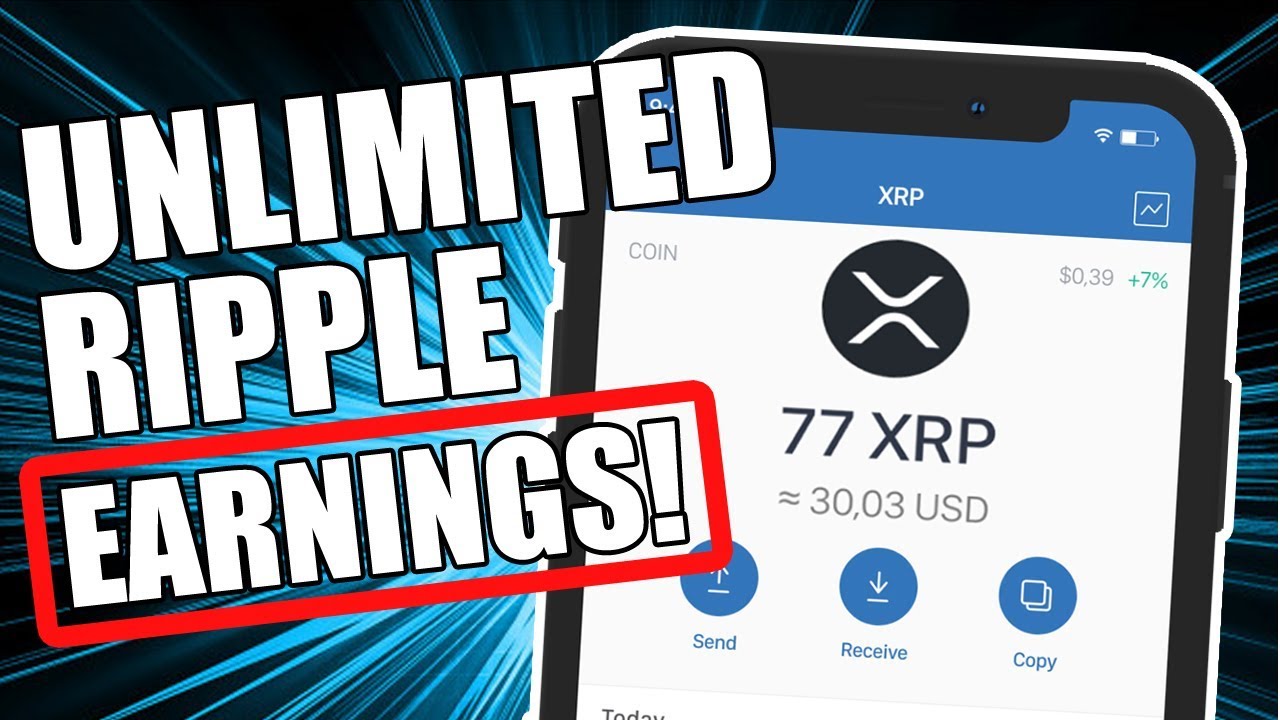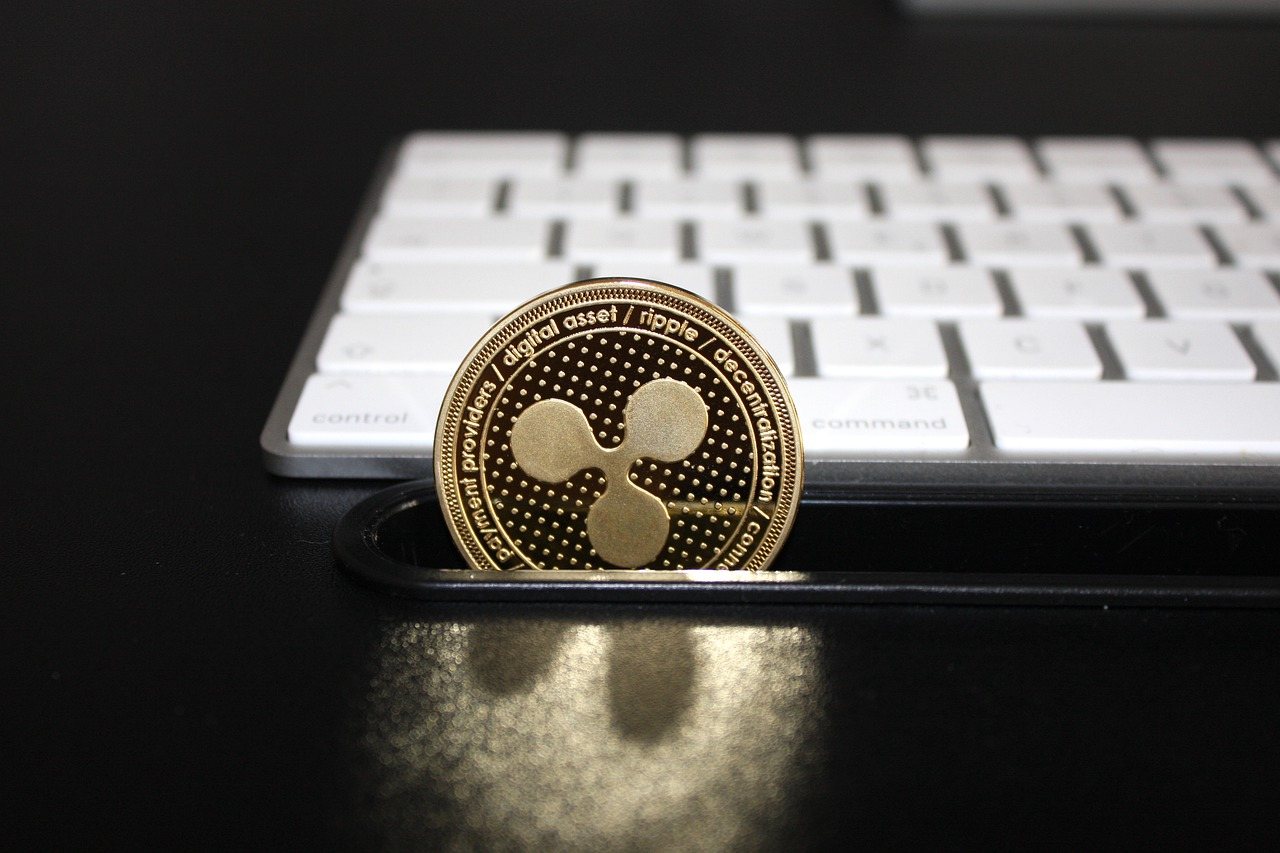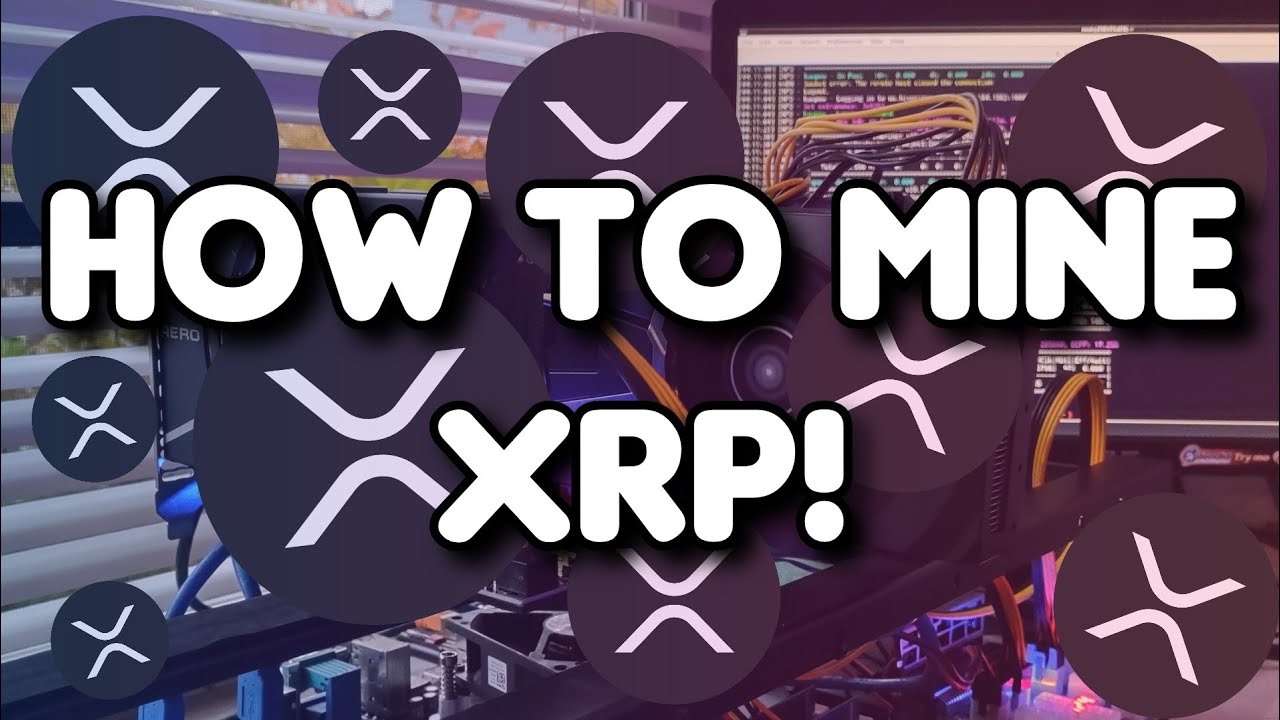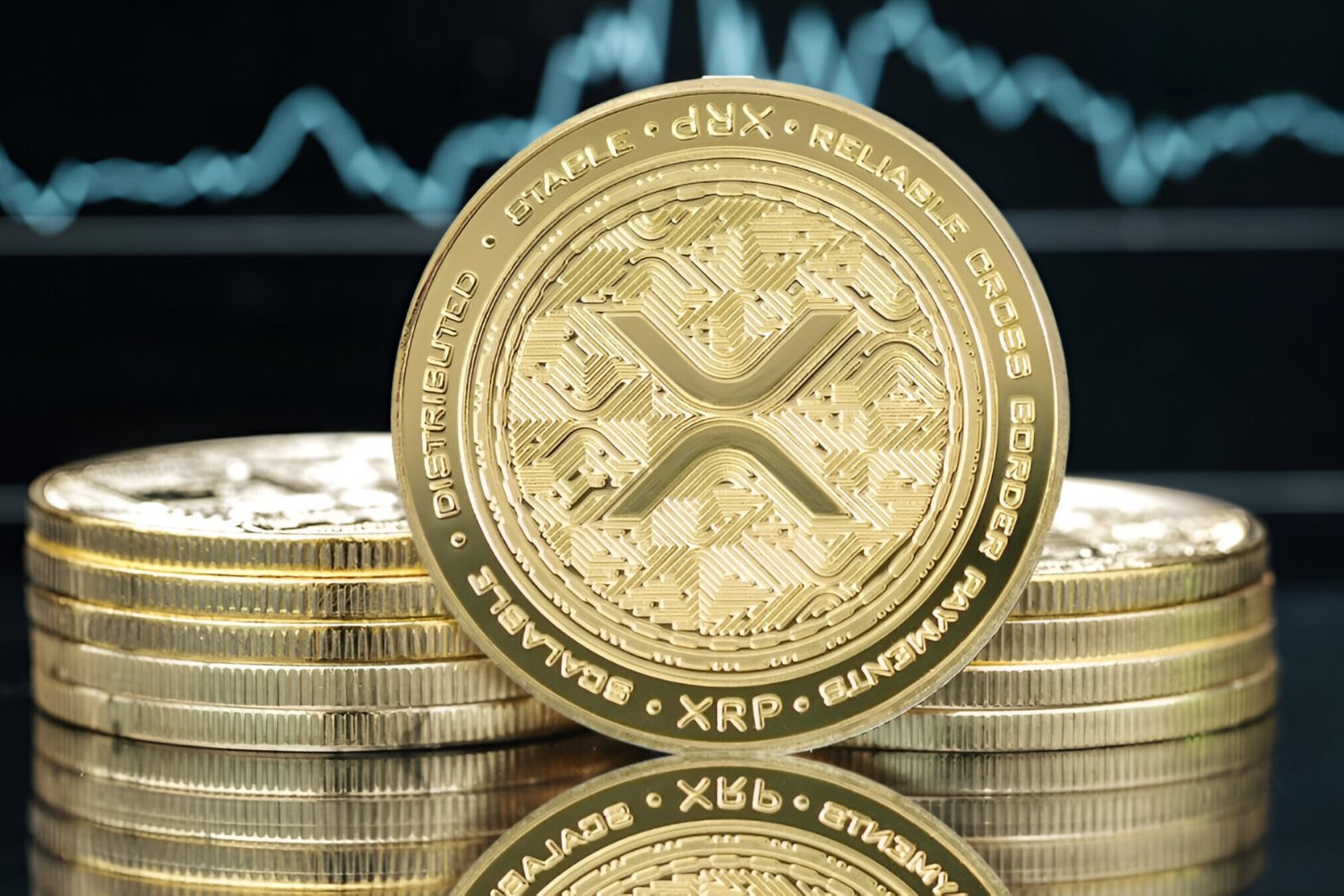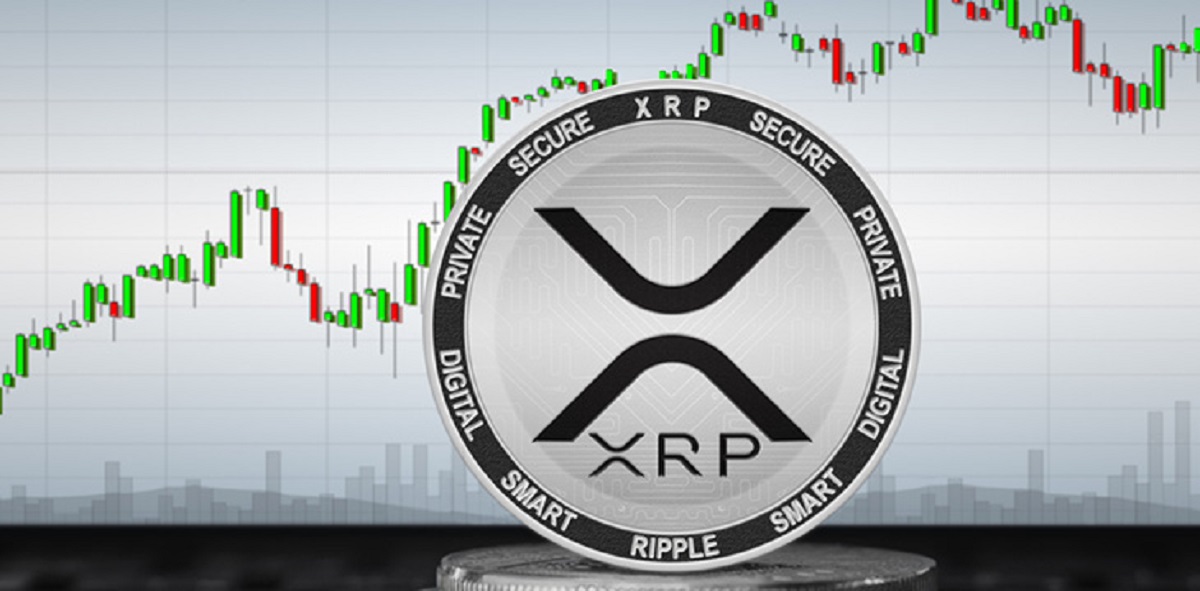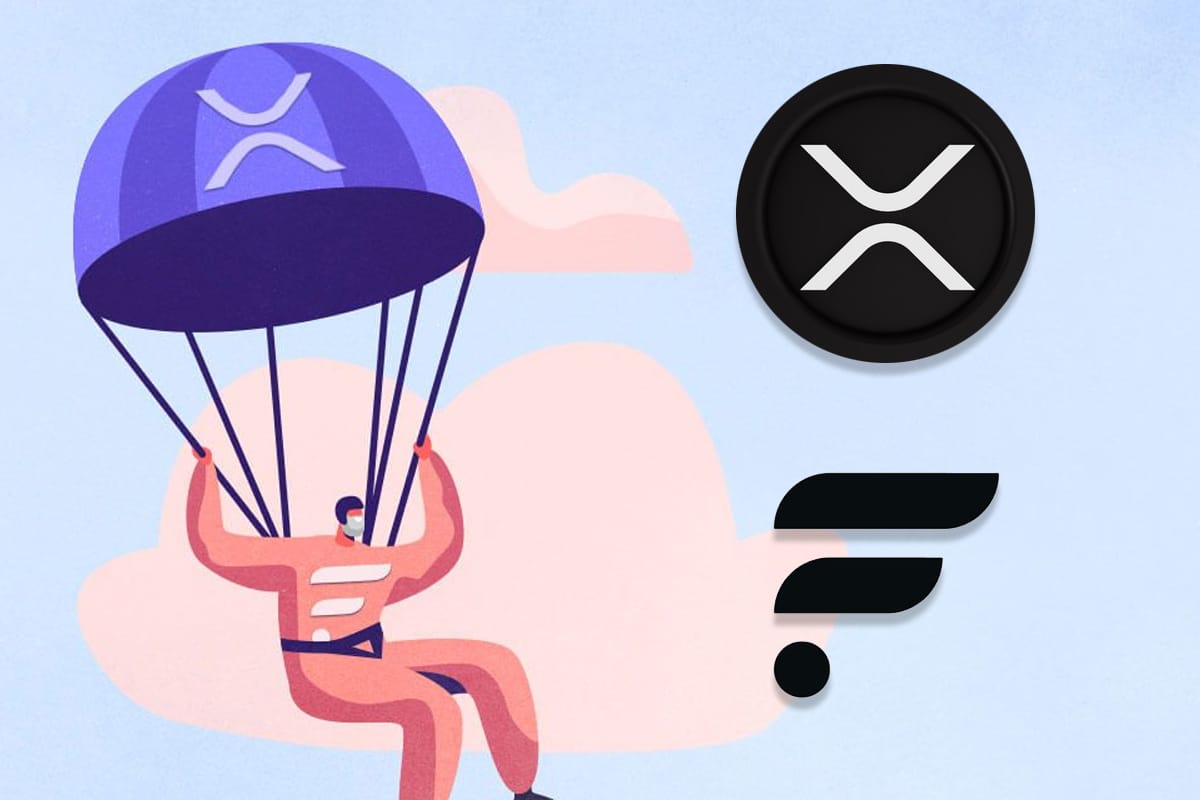Introduction
Welcome to the exciting world of XRP, a digital currency that has gained significant popularity in recent years. Whether you are a cryptocurrency enthusiast looking to explore new investment opportunities or simply curious about earning some XRP, this article will guide you through various methods to earn XRP.
Developed by Ripple Labs, XRP offers fast and low-cost transactions, making it attractive for individuals and businesses alike. Unlike traditional fiat currencies, XRP operates on a decentralized blockchain network, providing security and transparency.
Before diving into the different ways to earn XRP, it’s essential to understand the basics. XRP, often referred to as Ripple, is the native cryptocurrency of the Ripple network. It serves as both a digital currency and a protocol facilitating seamless cross-border transactions. With a fixed supply of 100 billion XRP, it is crucial to note that XRP cannot be mined like Bitcoin or other cryptocurrencies.
However, there are several alternative methods to acquire XRP. Whether you prefer actively participating in the cryptocurrency market or exploring more passive options, there is an opportunity suited to your preferences.
Throughout this article, we will explore popular methods such as mining, buying XRP on exchanges, accepting XRP as payment, participating in faucets and airdrops, becoming a validator, staking XRP, participating in lending programs, and trading XRP on the cryptocurrency market. Each method has its advantages and considerations, so let’s dive in and explore how you can start earning XRP.
Understanding XRP
Before delving into the various methods of earning XRP, it is important to have a solid understanding of what XRP is and how it functions in the cryptocurrency ecosystem.
XRP, also known as Ripple, is both a digital currency and a technology protocol created by Ripple Labs. Unlike Bitcoin and other cryptocurrencies, XRP does not rely on mining for its creation. Instead, 100 billion XRP tokens were pre-mined and released by Ripple Labs, with a significant portion held by the company itself.
The purpose of XRP is to facilitate fast and low-cost international money transfers. It works as a bridge currency, enabling seamless conversion between different fiat currencies in real-time. This feature makes it an attractive solution for financial institutions and payment providers seeking to enhance their cross-border transaction capabilities.
Ripple operates on a decentralized blockchain network known as the XRP Ledger. This ledger is maintained by a network of validators, which are responsible for validating and confirming transactions. Unlike Bitcoin’s proof-of-work consensus algorithm, the XRP Ledger utilizes a unique consensus algorithm called the Ripple Protocol Consensus Algorithm (RPCA).
An important distinction to be aware of is that XRP and Ripple are not interchangeable terms. XRP is the digital currency, while Ripple refers to the technology and company behind it. Ripple Labs has partnered with numerous financial institutions to integrate their technology and leverage the speed and efficiency of XRP for cross-border payments.
Another crucial aspect to note is that XRP has a limited supply of 100 billion tokens. This predetermined supply has led to discussions and debates regarding the distribution of XRP and its potential impact on market dynamics.
The value of XRP is determined by market demand and can experience significant fluctuations like other cryptocurrencies. It is traded on various exchanges, and its price is influenced by factors such as market sentiment, adoption by financial institutions, and overall cryptocurrency market trends.
Now that we have a solid understanding of XRP and its purpose, let’s explore the different methods of earning XRP and how you can get started.
Mining XRP
Unlike Bitcoin and many other cryptocurrencies, XRP cannot be mined. The entire supply of 100 billion XRP tokens was pre-mined and released by Ripple Labs. Therefore, the traditional mining process, which involves using computational power to solve complex mathematical problems and validate transactions, does not apply to XRP.
Ripple aims to ensure the stability and control of the XRP supply, and mining could potentially lead to centralization and manipulation of the currency. Instead, the XRP Ledger relies on a unique consensus mechanism called the Ripple Protocol Consensus Algorithm (RPCA).
In RPCA, rather than relying on miners, a network of trusted validators is responsible for confirming transactions and maintaining the integrity of the XRP Ledger. Validators are chosen based on their reliability and reputation, and they operate on a consensus algorithm that ensures agreement on the state of the ledger without the need for extensive computational power.
Therefore, if you’re interested in earning XRP, mining is not a viable option. However, there are several other methods available that allow you to acquire XRP tokens.
It is important to be cautious of any website, app, or service claiming to offer XRP mining capabilities. As XRP cannot be mined, these platforms are likely scams or fraudulent attempts to deceive users.
Now that we’ve covered the topic of XRP mining, let’s explore alternative ways to earn XRP, such as buying XRP on exchanges.
Buying XRP on an Exchange
One of the most straightforward ways to acquire XRP is by buying it on a cryptocurrency exchange. Numerous online exchanges offer XRP trading pairs, allowing you to exchange other cryptocurrencies or fiat currencies for XRP.
The process of buying XRP on an exchange typically involves the following steps:
- Create an account: Sign up for an account on a reputable cryptocurrency exchange that supports XRP trading.
- Complete the verification process: Some exchanges may require you to complete a Know Your Customer (KYC) process to comply with regulatory requirements. This usually involves providing identification documents and other relevant information.
- Deposit funds: Once your account is set up and verified, deposit funds into your exchange account. Depending on the exchange, you may be able to deposit fiat currency, such as USD or EUR, or other cryptocurrencies that you can convert to XRP.
- Place an order: Using your deposited funds, place an order to buy XRP. You can specify the amount of XRP you want to purchase and the price you are willing to pay.
- Wait for execution: Once your order is placed, it will be matched with a corresponding sell order on the exchange. If the order is successfully matched, the transaction will be executed, and the XRP will be credited to your exchange wallet.
- Transfer XRP to a secure wallet: To ensure the safety of your XRP holdings, it is recommended to transfer them to a secure wallet that you control. This reduces the risk of any potential hacking or security breaches on the exchange.
It is essential to choose a reputable and trustworthy exchange when buying XRP. Look for exchanges with a strong track record and positive user reviews. Additionally, consider factors such as security measures, fees, available trading pairs, and the exchange’s reputation within the cryptocurrency community.
Bear in mind that cryptocurrency prices can be highly volatile, so it is wise to monitor the market and make informed decisions when buying XRP on an exchange. You may want to consider setting a budget and investing only what you can afford to lose.
Now that you understand how to buy XRP on an exchange, let’s explore other methods of earning XRP, such as accepting it as payment.
Accepting XRP as Payment
If you own a business or provide goods and services, accepting XRP as a form of payment can be an excellent way to earn XRP directly. With its fast transaction speed and low fees, XRP offers a convenient payment method for both online and physical transactions.
To start accepting XRP as payment, you can follow these steps:
- Set up a wallet: If you don’t already have one, you’ll need to set up a wallet to receive and store your XRP. There are various wallet options available, including online, hardware, and software wallets. Choose a wallet that suits your needs in terms of security and convenience.
- Display your XRP payment address or QR code: Once you have a wallet, you can generate an XRP payment address or a QR code associated with your wallet. Display this information prominently on your website, invoices, or at your physical store to let customers know that you accept XRP as payment.
- Communicate your payment options: Inform your customers and clients that XRP is now an accepted payment method. You can update your website, social media profiles, and other marketing channels to let them know about this new payment option.
- Facilitate the payment process: When a customer chooses to pay using XRP, provide them with your payment address or QR code. They can then initiate the payment by sending the required amount of XRP from their wallet to yours.
- Confirm the payment: Once the customer’s payment is received, verify the transaction on the XRP Ledger or your wallet. Most wallets provide a notification or confirmation system to alert you when a payment is made.
- Manage your XRP holdings: Decide whether you want to hold onto the received XRP or convert it to another currency, such as fiat or another cryptocurrency. You can choose to liquidate or hold your XRP based on your preference and market conditions.
Accepting XRP as payment not only allows you to earn XRP directly but also opens up your business to a broader range of potential customers. With the increasing adoption of cryptocurrencies, offering XRP as a payment option can give you a competitive edge and attract cryptocurrency enthusiasts who prefer to transact using digital currencies.
Keep in mind that accepting XRP as payment comes with its own set of considerations. Be aware of the potential market volatility and factor that into your pricing strategy. Also, ensure that you have systems in place to handle customer inquiries and support related to XRP payments.
Now that you understand how to accept XRP as payment, let’s explore more methods of earning XRP, such as participating in XRP faucets.
Participating in XRP Faucets
XRP faucets are platforms that distribute small amounts of XRP to users as a way to promote and spread awareness about the cryptocurrency. These faucets typically require users to perform various tasks or solve captcha puzzles to earn XRP.
Participating in XRP faucets can be a simple and low-effort method to earn small amounts of XRP over time. Here’s how you can get started:
- Find a reliable XRP faucet: Not all XRP faucets are created equal, so it’s crucial to find a reputable and trustworthy platform. Look for faucets that have positive user reviews, a history of regular payouts, and transparent terms and conditions.
- Create an account: Once you have found a suitable XRP faucet, create an account on the platform. This usually requires providing a valid email address or linking your existing cryptocurrency wallet.
- Complete tasks or solve captchas: XRP faucets typically offer a range of tasks or puzzles that you need to complete to earn XRP. These tasks can include watching videos, clicking on ads, playing games, or solving simple captcha puzzles. Follow the instructions provided by the faucet platform to earn XRP rewards.
- Claim your XRP: Once you have accumulated a certain amount of XRP from completing tasks, you can request a withdrawal or initiate a transfer to your XRP wallet. Some faucets have a minimum withdrawal amount, so make sure to check the faucet’s terms and conditions.
- Repeat and explore other faucets: Participating in XRP faucets can generate small amounts of XRP over time. To maximize your earnings, consider exploring multiple reliable faucets and rotating between them.
While participating in XRP faucets can be an easy way to earn some XRP, it’s important to manage your expectations. The rewards from faucets are generally small, and you may need to accumulate a significant amount of XRP over time before it becomes substantial.
Furthermore, be cautious of scam faucets that promise unrealistically high rewards or ask for personal information. Stick to reputable faucets and do your due diligence before investing time and effort into any faucet platform.
Participating in XRP faucets can be a fun and low-risk method to accumulate small amounts of XRP. It’s a way to get started with XRP and engage with the cryptocurrency community. If you’re looking for more significant earning opportunities, let’s explore other methods such as joining XRP airdrops.
Joining XRP Airdrops
XRP airdrops are events where XRP tokens are distributed for free to a specific group of individuals as a promotional or marketing strategy. These airdrops are often conducted by blockchain projects, exchanges, or crypto companies to increase awareness, reward loyal users, or generate interest in their platforms.
Participating in XRP airdrops can be an excellent opportunity to earn XRP without any financial investment. Here’s how you can join XRP airdrops:
- Stay informed: Keep an eye on official announcements and news from the XRP community, cryptocurrency exchanges, and other crypto-related platforms. Airdrop announcements are often made on social media channels, forums, and cryptocurrency news websites.
- Follow the instructions: Each XRP airdrop will have specific instructions on how to participate. This can range from signing up on a particular platform, completing certain tasks, or fulfilling certain eligibility criteria.
- Provide the required information: To join an XRP airdrop, you may need to provide specific information such as your email address, XRP wallet address, or social media account details. Be cautious and only provide information to reputable and trusted platforms.
- Complete the required tasks: Some XRP airdrops may require you to complete specific tasks, such as sharing posts on social media, inviting friends to join, or interacting with the project’s website or app. Make sure to follow the instructions carefully to be eligible for the airdrop.
- Receive your XRP tokens: Once you have successfully completed the requirements for the airdrop, you will receive the specified amount of XRP tokens. These tokens will be deposited into your XRP wallet or the platform conducting the airdrop.
It’s important to note that not all airdrops are created equal, and some may have specific terms and conditions or limited eligibility criteria. It’s crucial to review the details and validity of the airdrop before participating to ensure you are not falling into a scam or fraudulent scheme.
Participating in XRP airdrops not only allows you to earn free XRP tokens but also provides an opportunity to discover new projects and engage with the wider cryptocurrency community. It’s a chance to explore innovative blockchain platforms that are leveraging XRP and potentially benefit from future developments and growth.
Now that you understand how to join XRP airdrops, let’s explore another method to earn XRP – becoming an XRP validator.
Becoming an XRP Validator
Becoming an XRP validator is an essential role in maintaining the integrity and security of the XRP Ledger. Validators are responsible for validating and confirming transactions on the network, ensuring consensus and preventing fraudulent activities.
To become an XRP validator, you need to meet certain technical requirements and follow the necessary steps outlined by the XRP Ledger’s consensus protocol. Here’s how you can become an XRP validator:
- Understand the role of a validator: Validators play a critical role in the XRP Ledger’s decentralized network. You’ll need to familiarize yourself with the responsibilities, technical requirements, and commitment required to become a validator.
- Set up a validating node: To become an XRP validator, you’ll need to set up and maintain your own validating node. This involves running the XRP Ledger software on a stable and secure server. Detailed technical instructions can be found in the XRP Ledger documentation.
- Configure your validator software: Once your node is set up, you’ll need to configure the validator software to participate in the consensus process. This includes setting up your validator’s unique verification key, domain, and other necessary parameters.
- Apply to become a validator: After configuring your validator software, you’ll need to submit an application to the XRP Ledger’s decentralized Unique Node List (UNL). The UNL comprises a list of trusted validators actively participating in the consensus protocol. Your application will be reviewed, and if accepted, your validator will be added to the network.
- Maintain your validator node: As an XRP validator, it is crucial to keep your node updated with the latest XRP Ledger software updates, security patches, and network improvements. Regularly monitor your node’s performance and resolve any issues promptly.
- Contribute to the XRP Ledger community: Being an XRP validator comes with responsibilities beyond transaction validation. Engage with the XRP community, participate in discussions, and contribute to the development and improvement of the XRP Ledger ecosystem.
By becoming an XRP validator, you not only help secure the network but also have the opportunity to earn XRP rewards. Validators are eligible for receiving a portion of the transaction fees generated on the XRP Ledger as a reward for their contribution.
However, it is important to note that becoming an XRP validator requires technical expertise, dedicated resources, and a significant level of commitment. It may not be suitable for everyone, and careful consideration should be given to the requirements and responsibilities before embarking on this journey.
Now that you understand how to become an XRP validator, let’s explore another method to earn XRP – earning through staking.
Earning XRP through Staking
Earning XRP through staking is a popular method that allows individuals to participate in the validation and maintenance of the XRP Ledger by locking up their XRP tokens. This process, known as “staking,” helps secure the network and allows participants to earn rewards in the form of additional XRP.
To earn XRP through staking, you can follow these steps:
- Hold XRP in a staking-enabled wallet: First, you’ll need to hold XRP in a wallet that supports staking. Some wallets and platforms offer staking services, allowing you to participate in the network’s consensus process and earn rewards.
- Choose a staking provider: If your XRP wallet does not support staking, you can consider using third-party staking providers. These platforms pool XRP from multiple users and act as validators on their behalf. Research and choose a reputable staking provider that aligns with your preferences and priorities.
- Lock up your XRP: Once you have selected a staking provider, you’ll need to lock up or delegate your XRP tokens to the staking pool. This process typically involves transferring your XRP to a specific address or smart contract associated with the staking provider.
- Participate in the consensus process: By staking your XRP, you actively contribute to the validation and consensus process of the XRP Ledger. Validators in the network will use your locked-up XRP to secure and verify transactions.
- Earn rewards: As a staker, you are eligible to earn rewards based on your contribution to the network. Rewards are typically distributed proportionally to the amount of XRP staked and the length of time your XRP is locked up. The specific reward mechanism may vary depending on the staking provider.
- Monitor and manage your staked XRP: Keep track of your staked XRP and regularly monitor your staking rewards. Some staking providers offer tools and dashboards that allow you to track your earnings and manage your staked assets.
Staking XRP can be a passive way to earn additional XRP tokens while actively participating in the security and maintenance of the XRP Ledger. It provides an opportunity for XRP holders to contribute to the network’s decentralization and consensus process while being rewarded for their contribution.
It’s important to note that staking may come with certain risks, such as slashing or penalties for misbehavior or network disruptions. Make sure to understand the terms and conditions of the staking provider, evaluate the associated risks, and choose a reputable and well-established staking platform.
Now that you understand how to earn XRP through staking, let’s explore another method – participating in XRP lending programs.
Participating in XRP Lending Programs
Participating in XRP lending programs is a way to earn passive income by lending your XRP to borrowers in exchange for interest payments. These lending programs, also known as “XRP lending platforms,” connect lenders and borrowers, allowing lenders to earn a return on their XRP holdings.
If you have idle XRP that you don’t plan to use actively, participating in lending programs can be an attractive option. Here’s how you can get started:
- Choose a reputable lending platform: Research and choose a trusted lending platform that offers XRP lending services. Ensure that the platform has a solid track record, strong security measures, and transparent terms and conditions.
- Create an account: Sign up for an account on the lending platform, providing any necessary identification and verification information as per their requirements.
- Deposit your XRP: Once your account is set up, deposit your XRP into your lending platform wallet. The platform will securely hold your XRP while your funds are available for borrowers to utilize.
- Select a lending package: Depending on the lending platform, you may have various lending packages or options to choose from. Each package offers different interest rates, lending terms, and risk levels. Evaluate the available options and select the package that best fits your investment goals and risk tolerance.
- Lend your XRP: After choosing a lending package, you can opt to lend your XRP to borrowers. The lending platform facilitates this process and matches your XRP with borrowers who require funding. Once the lending period begins, you start earning interest on your lent XRP.
- Monitor your earnings: Regularly access your lending platform account to track your earnings and interest payments. Most lending platforms provide detailed reports or dashboards that show your accumulated interest and enable you to manage your lending activities.
- Withdraw or reinvest your earnings: Once the lending period ends, you can choose to withdraw your earnings or reinvest them into new lending cycles. Consider your financial goals and risk appetite when deciding whether to withdraw or reinvest.
Participating in XRP lending programs offers an opportunity to earn passive income on your XRP holdings. The interest rates and returns can vary depending on market conditions and the lending platform you choose. It’s important to assess the associated risks and carefully consider the terms and conditions before participating in any lending program.
Additionally, be aware that lending platforms may have certain requirements or restrictions, such as minimum lending amounts or lockup periods. Take these factors into account and choose a lending program that aligns with your financial goals and preferences.
Now that you understand how to participate in XRP lending programs, let’s explore another method – trading XRP on the cryptocurrency market.
Trading XRP on the Cryptocurrency Market
Trading XRP on the cryptocurrency market can be a potentially profitable way to earn XRP through buying and selling. As one of the top cryptocurrencies by market capitalization, XRP is actively traded on various cryptocurrency exchanges, providing opportunities for traders to capitalize on price fluctuations.
If you’re interested in trading XRP, here are the steps to get started:
- Select a reputable cryptocurrency exchange: Choose a reputable cryptocurrency exchange that supports XRP trading. Look for exchanges with a user-friendly interface, strong security measures, and a wide range of trading pairs and liquidity.
- Create an account: Sign up for an account on the chosen exchange and complete any required verification steps. This typically includes providing identification documents to comply with Know Your Customer (KYC) requirements.
- Deposit funds: Deposit funds into your exchange account. You can deposit cryptocurrency, such as Bitcoin or Ethereum, or fiat currency, depending on the trading pairs available on the exchange.
- Choose a trading strategy: Determine your trading strategy based on your risk tolerance and market analysis. This could involve short-term trading, day trading, swing trading, or long-term investing. It’s important to research and understand different trading strategies before diving into the market.
- Execute trades: Once your account is funded, you can start trading XRP. Place buy or sell orders based on your trading strategy, taking into account factors such as price movements, market trends, and trading volume.
- Monitor the market: Keep a close eye on market updates and XRP price movements. Use technical analysis tools and indicators to identify potential entry and exit points for your trades. Stay informed about news and events that could impact XRP’s price.
- Manage your risk: Implement risk management strategies, such as setting stop-loss orders and taking profits at predetermined levels. Be mindful of the volatility of the cryptocurrency market and trade within your risk tolerance.
- Withdraw profits or reinvest: As you earn profits from your XRP trades, you can choose to withdraw them or reinvest them back into the market. Make decisions based on your financial goals and risk appetite.
Trading XRP on the cryptocurrency market requires knowledge of technical analysis, market trends, and risk management. It is important to keep a cool head and not let emotions dictate your decision-making process. Continuous learning, staying updated on market developments, and practicing risk management are key to success in cryptocurrency trading.
It’s worth noting that trading cryptocurrencies involves risk, and losses are possible. It is recommended to start with a small investment and gradually increase your exposure as you gain experience and confidence in your trading abilities.
Now that you understand how to trade XRP on the cryptocurrency market, let’s summarize the various methods we’ve explored to earn XRP.
Conclusion
Throughout this article, we’ve explored various methods to earn XRP, providing you with a range of options to choose from based on your preferences, resources, and goals. Whether you prefer active or passive income streams, there are opportunities available to earn XRP in different ways.
We started by understanding the basics of XRP, its purpose, and its role in the digital currency ecosystem. We learned that XRP cannot be mined like Bitcoin but is instead distributed through alternative methods.
We then delved into the different ways to earn XRP, including buying it on cryptocurrency exchanges, accepting it as payment for goods or services, participating in XRP faucets and airdrops, becoming an XRP validator, staking XRP, lending XRP, and trading XRP on the cryptocurrency market.
It’s important to approach these earning methods with caution, ensuring that you choose reputable platforms, understand the associated risks, and make informed decisions. Each method comes with its own considerations, potential rewards, and risks, so it’s crucial to conduct due diligence and evaluate which options align with your goals.
Remember, XRP, like other cryptocurrencies, can be volatile, so prudent risk management is key. Only invest what you can afford to lose and consider diversifying your investments to mitigate potential risks.
Lastly, continuous learning and staying updated with the latest news, market trends, and technological developments in the XRP ecosystem are essential for maximizing your earning potential and making informed decisions.
Now that you have a comprehensive overview of various methods to earn XRP, it’s time to choose the approach that resonates with you and take action. Whether you decide to explore XRP faucets, stake your XRP, become a validator, or engage in trading, remember to enjoy the process and adapt your strategies as you gain experience and knowledge.
Best of luck on your journey to earning XRP!







